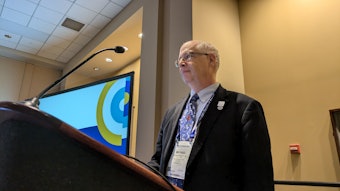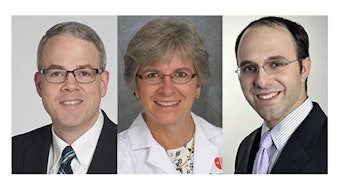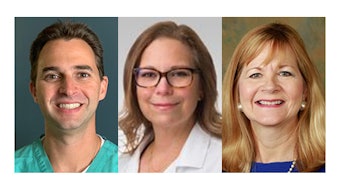An ounce of prevention
Anesthesiologists can be on the front lines of injury prevention in patients, both in and out of the hospital setting.

Because of their role in the hospital setting, anesthesiologists often find themselves at a critical juncture when it comes to preventable crises among their patients. These can range from gun violence to substance abuse and drug overdoses.
“Our vantage point gives us an opportunity and a responsibility to act, not just to mitigate these crises, but also to prevent them,” said Harmandeep Singh Boparai, MD, Director of Trauma in the Department of Anesthesiology at Brookdale Hospital in Brooklyn, New York. “As a specialty that is trained to think in terms of systems, we have expertise in assessing risk, making plans to prevent and mitigate adverse outcomes, and handle crises with humanity and skill — all vital assets in injury prevention.”
Dr. Boparai will be part of the panel for the Monday session, “Anesthesiologist’s Role in Injury Prevention — We Can Move Mountains, If We Try!”
Dr. Boparai said the role of the anesthesiologist in injury prevention can extend beyond the OR and even beyond the hospital itself.
“We can take a leading role in trauma and disaster preparedness, in programs to reduce opioid harm and deaths, in injury prevention campaigns in the community, promoting child safety from maltreatment, engaging in public health policy, and fostering cultures of safety,” he said.
Monica Vavilala, MD, Professor of Anesthesiology and Pediatrics at the University of Washington in Seattle, said from a public health policy standpoint, there are changes coming from the federal level in terms of funding cuts that could alter the way injury prevention research and education are being handled going forward.
“These are largely funded through foundations and also the Centers for Disease Control and Prevention,” she said. “As we know, the CDC has taken a big hit in terms of funding. There are challenges we anticipate in the federal funding climate, and we may want to think about how we keep these ideas and not lose them, because there may be opportunities in the future to increase our footprint. We’ll have to see what happens to the portfolio at the CDC for this work.”
Funding issues or not, Dr. Vavilala said anesthesiologists can still play a vital role in injury prevention at many levels including addressing the opioid crisis, firearm injuries, motor vehicle crashes, and acute trauma care.
“While anesthesiologists historically have focused on the intraoperative acute care portion of injury, there are opportunities to address what we call antecedent factors, or factors that lead to those injuries, and also outcomes after injuries such as chronic pain,” she said.
Bonnie Milas, MD, Clinical Professor of Anesthesiology and Critical Care Medicine at the University of Pennsylvania in Philadelphia, said the opioid crisis has led to a rise in drug overdoses. She will educate attendees on prevention tools that anesthesiologists can use in the form of an ASA initiative called REVIVEme. Dr. Milas spearheaded the creation of REVIVEme.com through her work with the ASA Committee on Trauma and Emergency Preparedness (COTEP).
The REVIVEme website provides critical instruction to ASA members and the public on how to respond to an opioid overdose.
“Death from opioid overdose continues to be a public health crisis that is otherwise not being tackled with a direct approach by any other physician group,” Dr. Milas said. “As anesthesiologists, we see various-aged patients at crucial touchpoints. These are brief, during routine or emergent surgeries — stressful events when patients are more likely to consider the importance of their health. We can be very impactful.”
In addition to those instances, Dr. Milas said ASA members can teach in their communities using slides from the website or simply refer a patient to the website.
Another weapon in the opioid crisis is naloxone products, which can help in the event of an overdose. Dr. Milas said anesthesiologists should always have these products and information available.
She said the “not in my home/neighborhood” mindset is dangerous.
“Every patient should have the information and be prepared for a drug overdose,” she said. “You don’t need to be a doctor to revive an overdose victim. This is our messaging, and it should be loud and clear.”
Regardless of what tools are used, session panelist Marie Theard, MD, FASA, Associate Professor of Neuroanesthesiology in the Department of Anesthesiology and Pain Medicine at the University of Washington, said a disproportionate amount of injury and violence is received by young people of color compared to their White counterparts.
“Black youth in the U.S. are dying from firearms at a rate that is four times that of their White peers,” she said. “Historic policies and practices founded on systemic racism negatively impact the social determinants of health, thereby amplifying community-based inequities associated with injury and violence.”
Dr. Theard said anesthesiologists are often on the front lines of treating these injuries and are therefore in a unique position to communicate with youth about the dangers of this kind of injury and how it can be prevented.
“Anesthesiologists, particularly those working in level one trauma centers that receive the most severely and violently injured children, are among the first group of physicians involved in caring for the injured,” she said. “Effective strategies for educating youth, particularly youth of color, on injury and violence to help prevent their becoming victims or perpetrators is critical and partly falls within our purview as anesthesiologists.”








